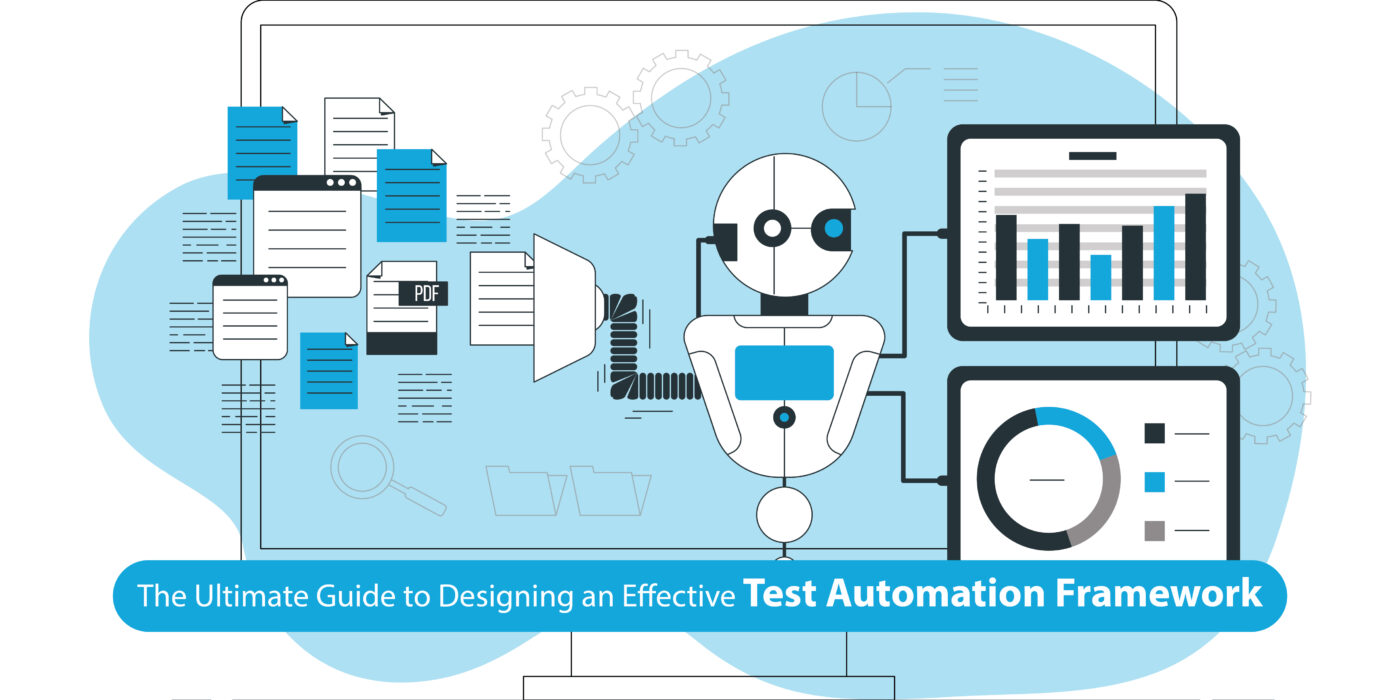In a world full of technology, are you still using manual testing being an engineer? Well, then it is high time to learn about test automation. The technique of automating manual testing operations is known as test automation. Test Automation Framework involves running test scenarios using software ab testing tools. It helps in minimizing time and human effort. Results are faster and more accurate with test automation. It increases the testing procedure’s general effectiveness. For intricate and recurring test scenarios, it is crucial. Better test coverage and scalability are made possible by the automation framework. Regression testing and defect locating are made simple. Faster feedback cycles and early bug detection are encouraged. The software’s dependability and quality are improved by test automation.
Are you willing to know more? Continue reading! In this article, we discuss how to design an effective Test Automation Framework. We will discuss every step involved in designing an effective automation framework for testing!
Key Steps in Test Automation Framework Design
A design automation framework contributes to having a true structure that helps support the corporate organization, which may expand in the future. Based on frameworks or standards that are useful in carrying out various software projects, it has become a widely recognized practice in the software industry. The test automation framework is the set of standards, interactions, and procedures connecting completely unrelated components that, in the simplest words, govern how scripts are known to be created and carried out. Here is the step-by-step explanation of how to create an automation framework for testing:
Separating Scripts and Data
It is one of the important steps in designing the test automation framework. For clarity, keep test data and test scripts separate. For script and data files, use proper naming practices. The test data should be arranged in a clear, accessible manner. Always establish a central location for test data storage. Make sure scripts include precise references to the pertinent information for the automation framework. To manage test data for the design automation framework, use variables or configuration files. Use data-driven testing to execute tests quickly. Always record the connection between the scripts and the associated data.
Library Creation
Libraries store reusable components for efficiency. The components of the design automation framework include databases, operations, procedures, and connections. Remember, available libraries are limited to implemented ones. Also, testers utilize only implemented libraries. Libraries ensure efficient software testing. Reusable components include Databases and operations are organized within libraries. Lastly, libraries enhance software testing processes resulting in an effective test automation framework. Implemented libraries serve software testing.
Also Read:- The Ultimate Guide to Building a Selenium Automation Framework
Adherence to Coding Standards
Maintaining Coding standards is one of the major elements in the world process of designing an automation framework for testing. Here are some of the things you should remember to enhance your test automation framework:
- Maintain scripting standards for consistent code.
- Test automation framework promotes code uniformity.
- Discourage individual coding practices for cohesion.
- Code uniformity supports interpretation by testers.
- Test automation framework enforces scripting standards.
- Maintain consistent coding practices in scripts.
- Standards improve interpretation for testers.
- Ensure uniformity through scripting standards.
- Framework supports maintaining code uniformity.
- Standardized scripts aid testers and developers.
Ensuring High Extensibility
Test framework adapts to software enhancements. A solid Design Automation framework is a steady support for new application features. Modification of existing features is made easy with high extensibility. Test automation framework embraces software changes. Here are some of the benefits of ensuring high extensibility:
- Effortless enhancement of application features.
- Support for modifications in existing functionalities.
- A reusable library aids in feature enhancement.
- The automation framework facilitates easy application feature upgrades.
- Adaptation to new software enhancements is seamless.
- Minimal effort is required for feature enhancement.
Version Control for Scripts and Framework
Another most important step in the whole process of creating an effective automation framework for testing. Maintain framework/script versions in the repository Use the versioning tool for easy monitoring. Remember, the repository tracks changes in software code. Moreover, version control ensures code monitoring. The versioning tool enables code change monitoring resulting in the effortless making of a test automation framework.
Conclusion
Hopefully, now you are ready to create an effective test automation framework. Automation frameworks provide a structured approach to testing. The guidelines ensure maintainable and reusable automated tests to enhance the features of the design automation framework. Test automation frameworks reduce the effort and cost of automation. Always focus on test case design and development. You can promote code reuse and collaboration among teams. Streamline test automation framework with standardized guidelines resulting in the maintenance of every rule and regulation. Make sure to enhance the scalability and efficiency of automated tests. If you are looking for more help and want to create the most effective test automation framework, do contact the experts at Monarch Innovation. Monarch always strives to provide its customers with best-in-class services. The qualified professionals will help you create amazing test automation frameworks.
FAQs
What is a test automation framework?
A test automation framework is a structured set of guidelines, practices, and tools that provide a foundation for creating, managing, and executing automated tests. It helps standardize testing processes, enhances test reusability, and improves the overall efficiency of test automation efforts.
Why is designing a test automation framework important?
Designing a test automation framework is crucial because it establishes a structured approach to automation. It promotes consistency, reduces maintenance effort, facilitates collaboration among team members, and provides a foundation for scalable and maintainable automated tests.
What is the role of libraries in a test automation framework?
Libraries in a test automation framework store reusable components such as databases, operations, and procedures. They enhance efficiency and promote code reuse, making testing processes more effective and manageable.





